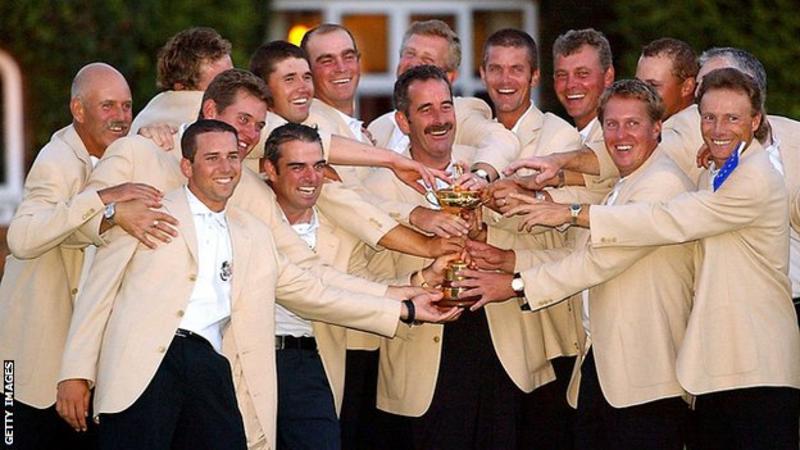Grow The Game Files: TNT Reminds That TV Matters
/Golf on TV could be the greatest, it could be the best, it could be King Kong banging on its chest!
Standing in the Hall of Fame, and the world might even know golf is not lame! I'll stop now before you get nightmares since I'm pretty sure Omega's latest ad (key word, ad), will be running a bunch during the Rio games.
I'll stop now before you get nightmares since I'm pretty sure Omega's latest ad (key word, ad), will be running a bunch during the Rio games.
Not being present at this year’s PGA Championship afforded an opportunity to be reunited with the early 2000s, a.k.a. a TNT broadcast at a major championship. But this is not to pick on any one network (well, maybe a little), as some of the same issues TNT exemplifies afflict all of the major broadcast presentations, though no major has the annual commercial and promo dump that is the PGA of America's dreadful presentation.
Shoot, even CBS head man Sean McManus talked to Golfweek.com's Martin Kaufmann right after the PGA to address the telecast and suggest the commercial load needs to be dealt with for the next three years of the deal.
No, the affliction I refer to runs deeper than the annual overcommercialization of the fourth of four majors. It's the tendency to stick to what got you here, what has worked over the decades, and to not give up screen space to anything but green grass and golfers. But most of all, to do what will please “partners” who want to play it safe while also preaching how we need to do things differently to save the sport.
Those partners--the PGA of America (this week), the PGA Tour, the USGA, the R&A--all talk relentlessly about growing the game and reaching the all-important millennials, yet refuse to see that their biggest growth tool is in how they present golf on television. Outside of the cost to play, I can’t think of anything more stifling for growth than an aspiring golfer, turning on the suffocatingly safe presentation of golf at the PGA Championship.
TNT’s presentation undermines the event’s place in the major spectrum by appearing to work out of an early 2000’s playbook. (The addition of some fun split screens showed some sign of life and fresh voices in Mike Weir and Amanda Balionis were huge positives.) Yet the ultra-conservative approach to the PGA Championship is even more maddening because of TNT's bold approach to the NBA. That’s where innovation and must-see pre and post game shows have spiked ratings, establishing the cable network as the best at bringing us pro basketball.
In golf, it's vital that television presentation be strong to "grow" participation in the game. More people watch golf on TV than avidly play it. That's an amazing notion suggesting how vital telecast presentation may be in motivating people to play.
With the PGA Championship that TNT airs through 2019, the cable network’s idea of a pre and post game show amounts to reruns of something from their highly-rated catalog. Those cash cows merely require a few an engineer to push a few buttons takes priority for TNT over even now-standard re-broadcast for major rounds (which are appreciated by working folks or those with DVR’s full to the brim).
Adding to the pain is what appears to be a reluctance on CBS’s part to share its gadgets with the TNT broadcast. Can't we all get along here?
Good TNT broadcasts will make more people watch CBS!
As with NBC’s coverage, the beauty of the golf course is a CBS priority and in the early days of high definition, no one disagreed with this approach. But now that nearly all viewers are watching on an HD flat screen and enjoying access to Internet-enabled information, the minimalist approach to screen acreage has begun to give core fans the impression of laziness and casual fans a sense that things could be better. In a day when people can handle more graphics and social media information on screen, golf is still holding back real-time information.
Knowing how hard the people in golf television work, particularly during majors, the impression of laziness is an unfair one. Golf is by far the most difficult sport to cover. Nonetheless, as we get more fun stuff like Protracer, on-screen graphics/Trackman data, split screens that give us a better sense of the golf hole faced, and full-field scores, the broadcasts that eschew such progress only give the impression to viewers that golf is stuck in a different decade. This was TNT last week.
When something controversial happens--like the PGA’s miscue with a hole location and repeat of its 2005 refusal to move up tee times--the lack of broadcast discussion looks lame while social media covers the story. This undermines the credibility of the networks and tournament host. (Especially when it’s the network home to Ernie, Charles, Kenny and Shaq, where nothing is off limits and controversies are embraced). Also, do recall that Fox’s breakthrough at the U.S. Open came at the expense of actually covering its partner’s mistakes. Painful for the USGA, yes, but also a huge boost to their partner overpaying for the product.
The people who want to grow the game need to stop focusing so much on the production values of their public service announcements. They need to look within and start pushing their broadcast partners to rethink how they present the sport, even if means giving back a few bucks to help the networks expand certain production values. These conversations are long overdue and more necessary than another short term feel-good initiative. Because those PSA-driven grow the game concepts pale compared to motivating people by giving them a telecast that inspires them to run to the range.

















